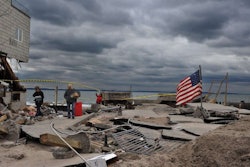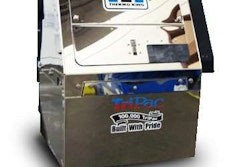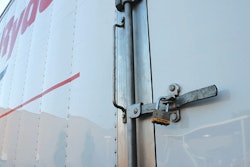While most Americans were soundly asleep on Sunday morning, Oct. 28, an emergency team for Baylor Trucking came to the company’s office in Milan, Ind., to begin preparations for Hurricane Sandy. The superstorm was moving toward the Atlantic coast and was set to make landfall near Atlantic City, N.J., the evening of Oct. 30.
When the team arrived, Baylor had 56 trucks in New Jersey and Pennsylvania.
The next day, 20 drivers were still in the storm’s path. The goal was to move them out by 2:00 PM, hours before Sandy was scheduled to arrive that evening.
“It was an all-out scramble,” says Cari Baylor, director of sales and information technology. When the storm hit Tuesday evening, five drivers remained in the area due to road closures. The emergency team was at least able to ensure all drivers were parked in safe areas.
“It was a group effort with the teamwork here, the technology, and the drivers,” Baylor says.
Some carriers located in this region had to relocate more than just drivers. Price-Tran’s central dispatch office in Allentown, Penn., lost electricity, Internet and phone service when the storm passed through. Allentown is located 80 miles inland from the Jersey shore.
“We were basically shut down for two days and lost significant revenue in what would otherwise have been a great month with 23 operating days in October,” says Dave Ward, president of the dry-van carrier with 16 trucks.
Storms rarely catch companies by total surprise. With a few days or few hours notice, carriers can use their modern technology to move employees and assets to safe locations. But when the moment of truth arrives, that same technology might be rendered useless.
“The biggest fall back was simple cell phones, if you could keep a car handy to power a charger. But the cell providers limited the call time to about 60 seconds, ” Ward says.
Ward was able to relocate his dispatch office 1.5 hours south to Wilmington, Delaware. The move went seamlessly because the company’s dispatch software and mobile applications are cloud based.
“We could do what many trucking companies couldn’t do and that’s be back up and running from anywhere with an Internet connection and cell coverage,” he says.
When the moment of truth arrived for Baylor Trucking, perhaps the most effective technology was a “connected” in-cab navigation system from Telogis called NaviGo. This technology helped to route drivers as road closures, traffic delays and other dynamic events unfolded.
The NaviGo system is installed on the company’s Qualcomm MCP 100 and 200 onboard computing platforms. When drivers are matched with loads, Baylor’s dispatch software sends the current vehicle location and route line to NaviGo’s servers. The servers calculate a route that is sent to the NaviGo application in the vehicles for turn-by-turn, spoken directions.
During the storm, Telogis followed 55 major storm closures that affected 1,165 miles of highway and close to 3,000 road segments. These updates were automatically added to NaviGo as “route modifiers” to help drivers avoid delays. Telogis collects the information from a variety of electronic and human sources, including a community of 120,000 drivers that can report road closures and other information through a feedback feature in NaviGo.
Hurricane Sandy served as a powerful reminder of the importance of teamwork and technology to manage a crisis.













